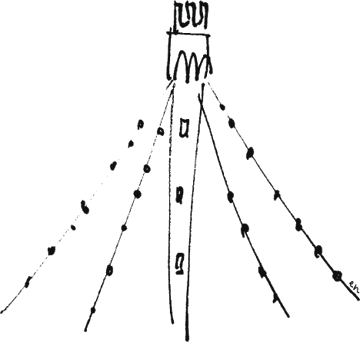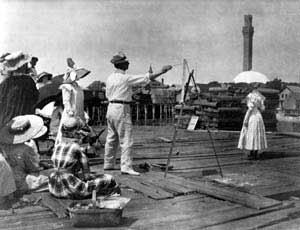 I am Provincetown.com ~ Ptown: An Extraordinary Place with Extraordinary People
I am Provincetown.com ~ Ptown: An Extraordinary Place with Extraordinary People
Provincetown Calendar of Events: What, When, Where ![]()
![]() A picture is worth a thousand words...
A picture is worth a thousand words...
|
Home | People | Provincetown Birthdays | Places | Favorites | Beaches | Events | Art | History | . . . . . . . . . . . . . . . . . . . . . . . . . . . . . . . . . . . . . . . . . . . . . . . . . . . . . . . . . . . . |
 |
The Cape Cod School of Art was founded by Charles W. Hawthorne at the turn of the century when Impressionism was held in high esteem, art colonies were popular in Europe and summer schools of art were emerging in America. It was a time, too, when art students studied with 'master teachers,' following their teachers from place to place.
Beginning in 1899, Hawthorne taught his plein air method of painting on Provincetown's waterfront in the summer and taught at the Art Students League in the winter. Typically Hawthorne's model would be posed in bright sunlight, face shaded with a hat or parasol so no features were visible. Large groups of people watched as he painted at his easel, dramatically demonstrating his theory of color and the effects of light on an object.
Hawthorne attracted students from all parts of the country, with as many as 90 enrolled in a session. In 1928 Hawthorne charged $50 tuition for the summer and scholarships were abundant. Weekly demonstrations were held outdoors and each Saturday the students' work was reviewed in a critique session lasting for hours.
Hawthorne taught his students to paint directly from nature. While many of them became fine Impressionist landscape artists whose works were filled with color and light, many also became noted abstract artists. Hawthorne himself was primarily a figurative painter in oils, working in a darker style of Impressionism than the one he taught.
When Hawthorne died suddenly in 1930, Henry Hensche changed the school's name to the Cape School of Art and moved it to 48 Pearl Street, where Hawthorne had at one time maintained a studio. Hensche had studied with Hawthorne for eight years and worked as one of his assistants. He maintained Hawthorne's teaching procedures and theories.
For 55 years Hensche taught in Provincetown, continuing the tradition of plein air demonstration and extended criticism. He also continued to send students out to paint in the dunes and on the waterfront. Hensche developed the "brick system" where students used as subjects solid blocks painted in single strong colors and placed in the outdoor light. This allowed them to concentrate on mass rather than detail, seeing the effect of light and shadow on color.
from PROVINCETOWN: THE ART COLONY A Brief History and Guide by Nyla Ahrens, published by Provincetown Art Association and Museum, 1997. Revised edition published 2000. Available in print at Provincetown Art Association and Museum Store.
© Nyla Ahrens
![]()
Pin it!
. . . . . . .

Charles W. Hawthorne demonstrating to class, c. 1910. Unknown photographer. PAAM archives


If I can say "I am Provincetown" so can YOU :)
. . . . . . . . . . . . . .
© Since 2000. All rights reserved.